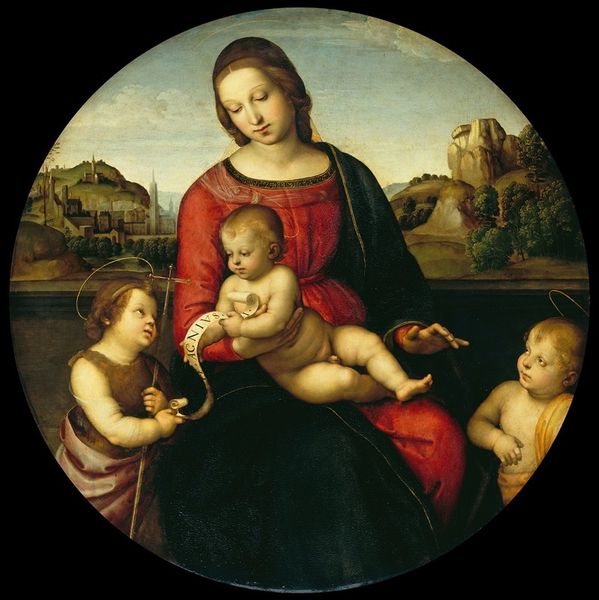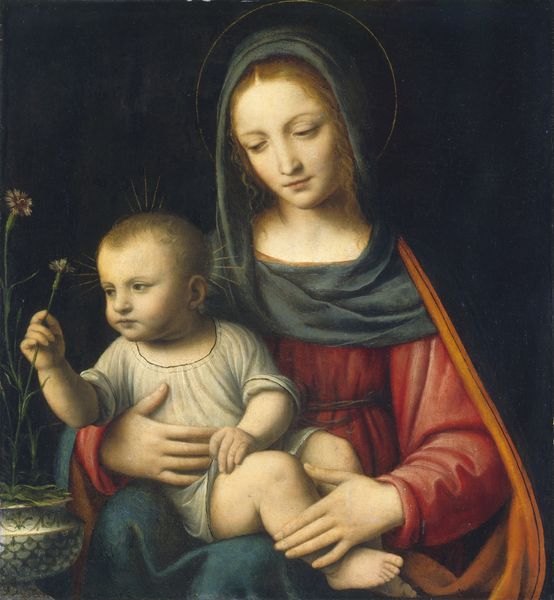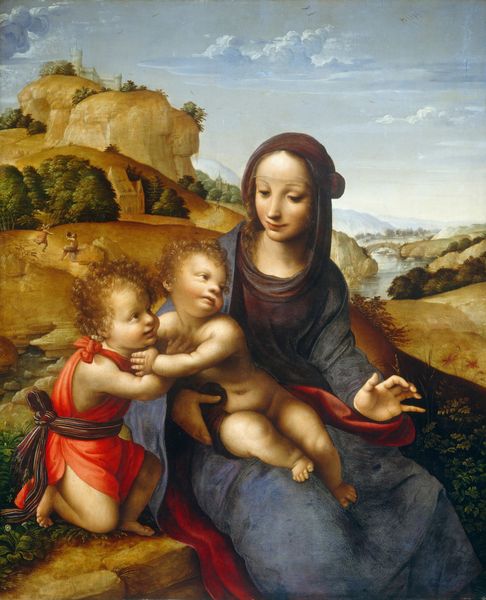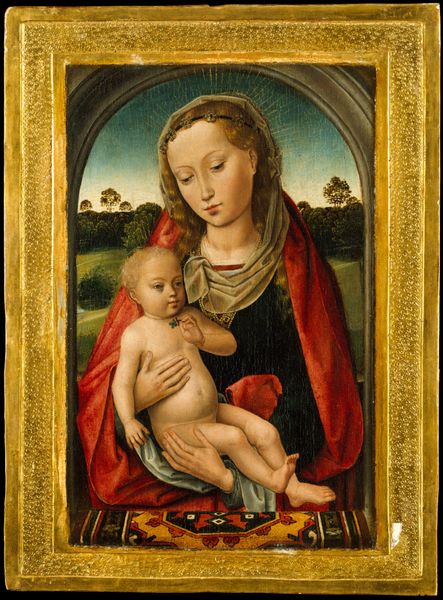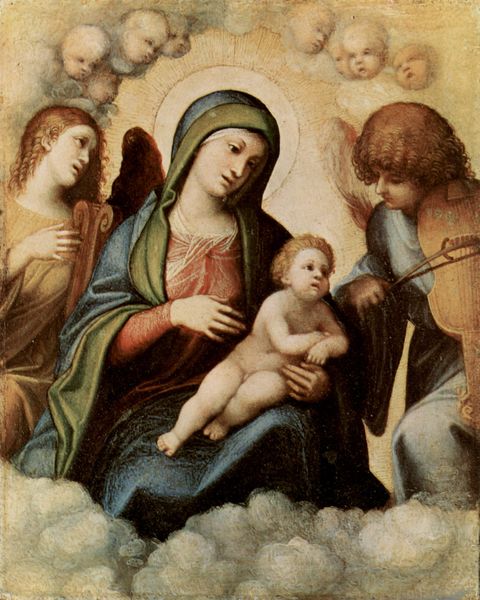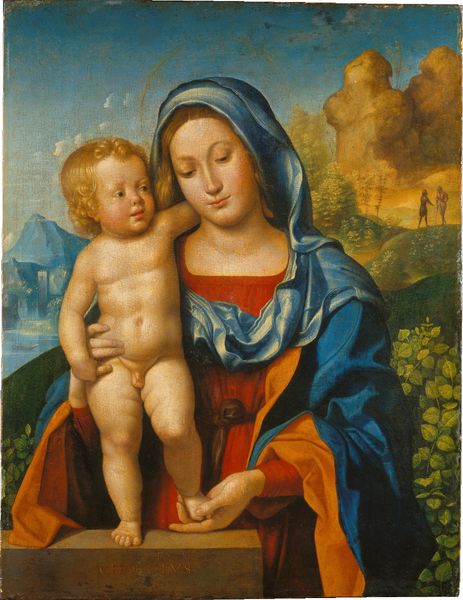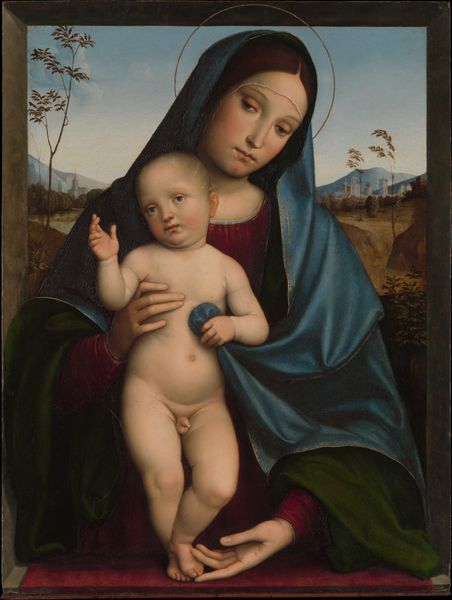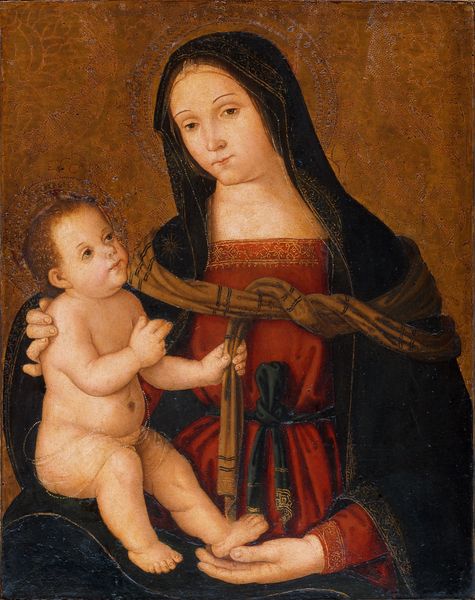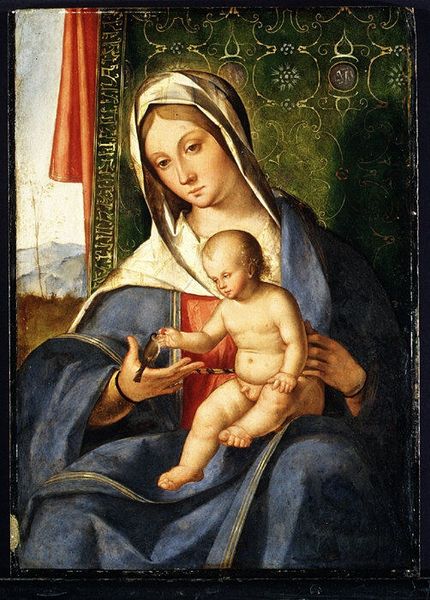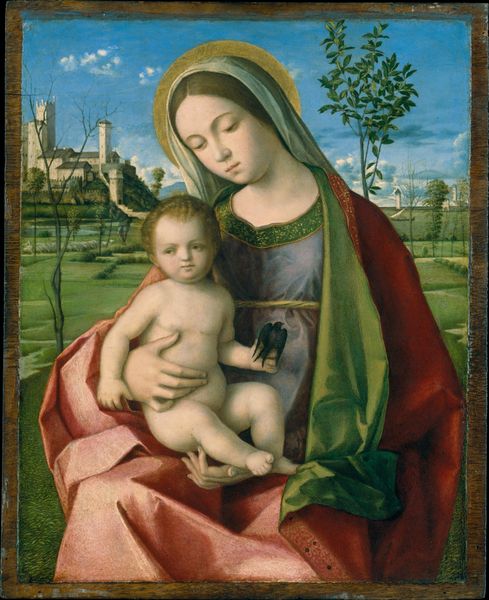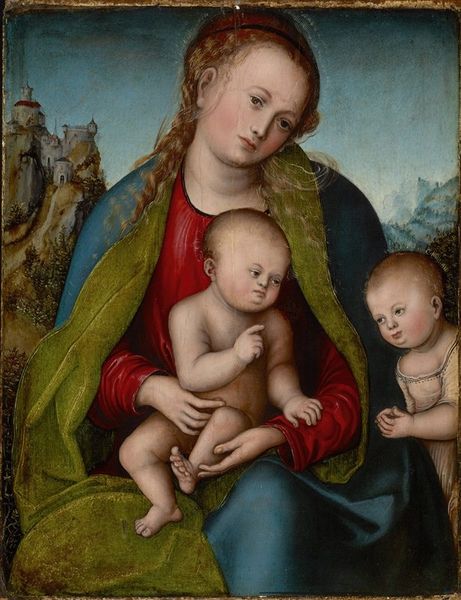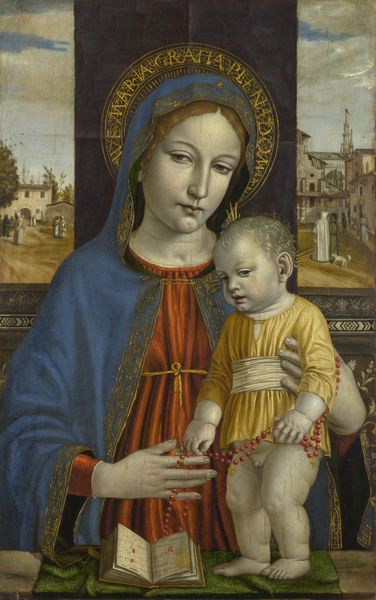
painting, oil-paint
#
portrait
#
painting
#
oil-paint
#
figuration
#
11_renaissance
#
history-painting
#
italian-renaissance
#
angel
Dimensions: 71.8 x 59.9 cm
Copyright: Public Domain
Curator: Before us we have Cavazzola's "Madonna and Child with an Angel," an oil painting from 1519 now residing at the Städel Museum. The composition features three figures arranged in a tight pyramidal form. Art Historian: My initial impression is one of gentle melancholy. The figures seem caught in a moment of quiet contemplation, an underlying sense of foreboding in the shadows. Curator: Precisely. Observe the artist’s adept handling of chiaroscuro, particularly how the stark contrast illuminates the Virgin's face, drawing the viewer’s eye to her delicate features and pensive expression. This contrasts with the relative darkness behind the angel and Madonna, thus reinforcing the painting’s formal balance. Art Historian: That play of light is key, imbuing the figures with symbolic weight. Lilies held by the angel symbolize purity, connecting the virgin to cultural traditions. Note the Christ child’s precarious grasp at his mother’s veil: he clutches, seeking comfort or perhaps premonitions of his fate. Curator: Intriguing. And consider also the texture – look how Cavazzola captures the subtle variations of fabric. The way he manipulates the medium itself generates meaning, layering emotional depth. His application yields both smooth flesh tones and rougher, implied weaves that subtly reflect the drama’s narrative. Art Historian: Absolutely, look too at the positioning. Her eyes downward, as if internalising. The painting captures an essential element within the era: she almost shrinks away from the prophetic weight bearing upon her, that as mother she knows her child’s trajectory from blessed to martyred. Curator: A strong interpretation; nevertheless, I’m inclined to appreciate primarily its technical prowess, the painterly qualities which distinguish it from contemporary pieces of a less meticulous nature. Art Historian: Of course, each facet builds layers to overall understanding: consider how those meticulous arrangements construct wider visual semantics beyond pure aesthetics. It’s precisely that rich blend between form and symbolism makes encountering “Madonna and Child with Angel” rewarding. Curator: Indeed. This close encounter has enhanced my perspective on the intricate and engaging surface that constitutes it; a piece I will examine even further when next I return. Art Historian: And it enriches the continued exploration between artist, art, and our interpretations of culture. The threads will continue onward.
Comments
stadelmuseum almost 2 years ago
⋮
No Renaissance painting would be complete without its symbol. The Infant Jesus is still sitting on his mother's lap and gazing calmly at the viewer, but the little bird perched on his fingers already points forward to the inescapable course of history. It is a goldfinch, a symbol of the Passion of Christ. A white lily symbolising the purity of the Virgin Mary is held above the child's head by an angel. According to Christian doctrine, this is why the child was free from original sin - as the way the angel is gazing at him makes clear. This portrait of the Madonna is thought to have been the work of the Italian Renaissance painter Cavazzola.
Join the conversation
Join millions of artists and users on Artera today and experience the ultimate creative platform.
